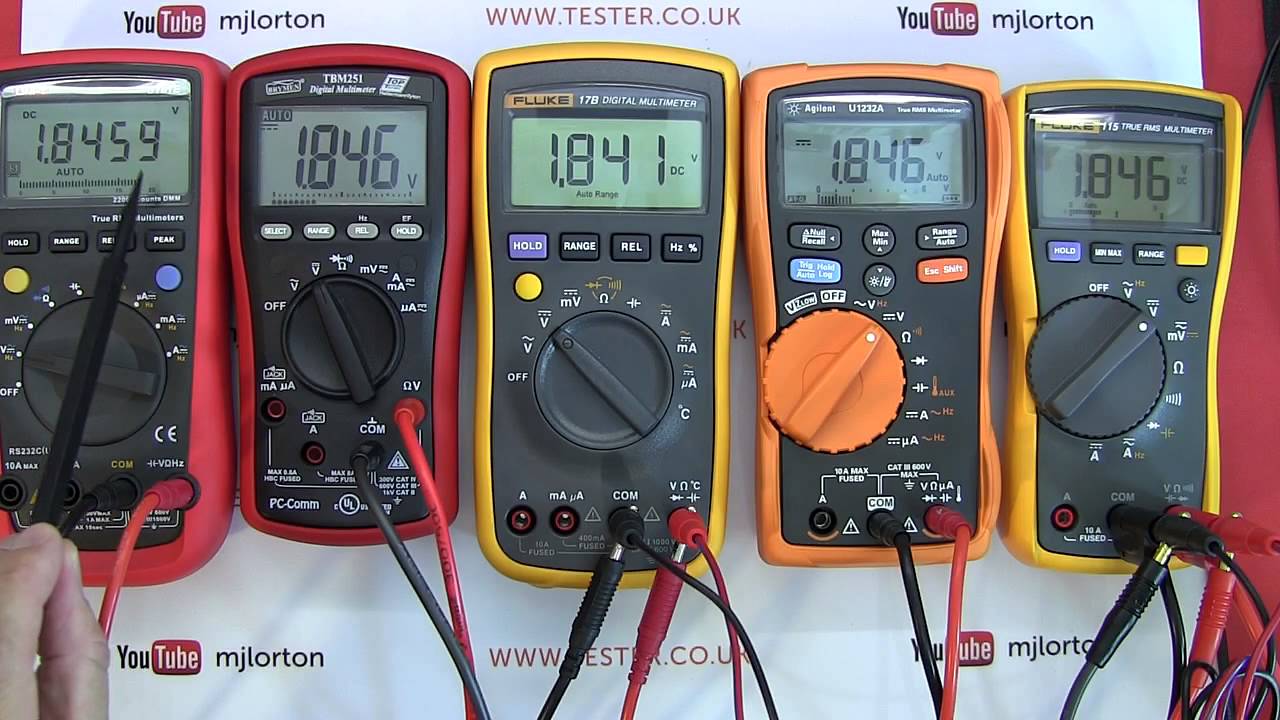How To Use Fluke 117 True RMS Multimeter

How To Use Fluke 117 True RMS Multimeter
The new-generation is tech-savvy. The advancements of technology as always aroused the interest of the millennials. The famous saying “necessity is the mother of invention” has been well understood by the the millennials who have widely accepted the inventions of the new era technology. You might have heard about fluke 117 multimeters but not many know “how to use fluke 117 true rms multimeter“! To know the method of using fluke 117 multimeter, you must first know what multimeters exactly are and what is their use!
A multimeter is an electronic instrument which has been widely accepted by technicians and engineers all over the world. The test equipment is used to measure voltage current and resistance in an electrical circuit. A multimeter checks the continuity in an electrical circuit between two points. A multimeter comprises of an ammeter, an ohmmeter and a voltmeter. The hand held device has a numerical digital display which has two indicator needles- positive and negative. Multimeters are used to test batteries and electric motors. Multimeters are also used for power supplies and household wiring.
Multimeter find its application for a variety of purposes like electronic and electrical projects. An ammeter is used for different measurements in multimeter. Some of the applications are listed here.
The Best Uses
- Environmental applications
- At weather stations
- DMM internal temperature
- DC measurements of high and low values
- Peak to peak measurements
- DC average measurements
- DC current measurements
- True RMS AC current
- Measure resistance with constant voltage or constant current
- Time and fast frequency measurement
- Micro ohmmeter
The Various Types

The different types of multimeters are digital analog and fluke multimeters. Fluke 117 true RMS multimeter is a type of fluke multimeter. Before we proceed to know “how to use fluke 117 true rms multimeter“, let us first know the different types of multimeters to get a basic idea.
Digital Multimeters
The most commonly used multimeters are Digital Multimeters (DMM). The the digital multimeters perform various functions. The two probes with red and black colour on digital multimeter are positive and negative ends. The red probe measures ohm, volt and amperes. The black probe is connected to COM JACK test a diode along with measuring voltage and resistance. High accuracy and its ability to read positive as well as negative values are its biggest advantages.
Analog Multimeters
The Analog Multimeters are also called as the Volt-Ohm-Milliammeter or VOM. It is constructed with the help of a moving coil meter. The pointer indicates the readings on the scale. Multirange current measurement can also be done with the help of meter. The instrument is connected in series with the unknown source for current measurement. A resistor is connected with the meter in series for DC Voltage measurements. Different resistors can be used for multirange measurement. The unknown resistance is connected with the meter for measuring the resistance. Its affordability and measurement of fluctuations in the readings are its biggest advantages.
Fluke Multimeters
Fluke Multimeters are the portable multimeters. It tests diode along with measuring current and voltage. It has multi selectors to choose a particular function. To select most measurements, it has automatic ranging. If the magnitude of the signal is unknown, it can record accurate reading. The fuse is protected to avoid damage when connected to a wrong port.
This might have given you an idea of the fluke multimeters. You might be wondering about “how to use a fluke 117 true rms multimeter”; but first know what is a True-RMS before proceeding further!
True-RMS
Firstly, RMS is root mean square. The three tools that measure an AC voltage comprise True-RMS as one of them. Average responding digital multimeter and oscilloscope are the other two tools. Except oscilloscope, the other two can measure pure AC waveforms. Moreover, True-RMS is preferred over the other as it can measure sinusoidal and non-sinusoidal; both the waveforms. The DC equivalent of an AC waveform is calculated by RMS. The various areas where RMS find its applications are:
- Computers and electronic ballasts
- Solid-state environments
- HVAC
- Variable-speed motor drives
True-RMS also takes measurements on the power lines where there are unknown AC characteristics. Fluke 117, a part of 117 series of multimeters has a maximum current of 10A DC and 10A AC. It has a 6000V AC while the DC voltage is 0.0006V. It measure capacitance and frequency measurement and has a maximum resistance of 6. It is a battery-powered model and has a 6000 count display.
You may now know the procedure for “how to use fluke 117 true rms multimeter“! You first have to connect the proves to the multimeter. The red probe is plugged into the positive end and the black probe into the negative terminal. Next, switch the multimeter on to select the resistance function. The red and black probes must be made to contact to assure that the multimeter is working. Ideally, a low resistance must be seen on the LCD display. It may be around 0.5 ohms or even less than that.
The central dial is to be used next. It allows you to switch to the function you want. “V” must be selected for voltage of you want to measure the voltage. “I” has to be selected of you want to measure the current and “R” has to be selected for measuring the resistance. The LCD display will finally show the measured value that the multimeter has recorded. If you want to measure voltage, you need to insert the black probes in COM Jack. The red probe is inserted into the V Jack. The test leads are then connected to the circuit to be checked in the order of black first and then the red. The measurements can be read in the display. RANGE button allows you to fix a range prior to the measurements. The MIN/MAX button allows you to know the highest and the lowest values and the multimeter beeps upon recording a new measurement. REL button allows you to set the multimeter.





